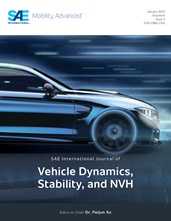Automotive signal processing is dealt with in several contributions that propose
various techniques to make the most out of the available data, typically for
enhancing safety, comfort, or performance. Specifically, the accurate estimation
of tire–road interaction forces is of high interest in the automotive world. A
few years ago the T.R.I.C.K. tool was developed, featuring a vehicle model
processing experimental data, collected through various vehicle sensors, to
compute several relevant virtual telemetry channels, including interaction
forces and slip indices. Following years of further development in collaboration
with motorsport companies, this article presents T.R.I.C.K. 2.0, a thoroughly
renewed version of the tool. Besides a number of important improvements of the
original tool, including, e.g., the effect of the limited slip differential,
T.R.I.C.K. 2.0 features the ability to exploit advanced sensors typically used
in motorsport, including laser sensors, potentiometers, and load cells installed
on shock absorbers, anti-roll bars, and brake pressure sensors. Such information
is harnessed in purposely-devised novel methodologies for estimating key
quantities including roll angle, aerodynamic forces, and camber angle, all
affecting tire–road interaction forces and friction ellipses. This is made
possible by a completely modular structure of the tool able to employ the most
accurate formulation depending on the sensors actually available.
